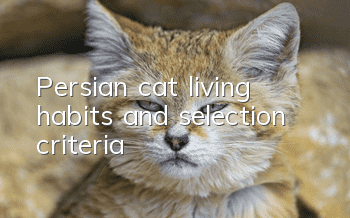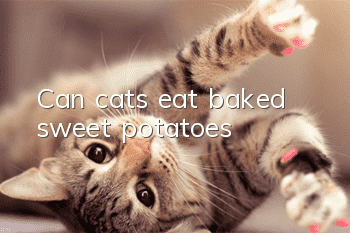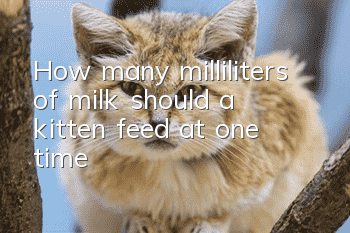Persian cat living habits and selection criteria

Clean your own fur frequently: Kittens love to lick themselves and clean themselves a lot of the time. After meals, it will wipe its beard with its front paws, lick its anus with its tongue after urinating, and lick its fur with its tongue after being held. This is the kitten removing the odor and dirt from its body. There are many rough little protrusions on the cat's tongue, which are the most suitable tools for removing dirt. Among domestic animals, cats are the most hygienic. Cats can be seen washing their faces with their paws every day. Moreover, they defecate in a fixed place every time and cover the feces with their paws after defecation. Cats' habit of cleaning is an important reason why people are willing to keep cats. But are cats really as hygienic and obsessive about cleanliness as people imagine?
In fact, cats’ grooming and “grooming” are entirely due to physiological needs. For example, a cat licks its fur with its tongue to stimulate the secretion of sebaceous glands, making the fur shiny and lubricated, making it less likely to get wet, and licking up a small amount of vitamin D, which promotes the normal development of bones, makes the coat fluffy, and promotes heat dissipation. function. This is easy to understand as long as you pay attention to when cats groom. Cats usually start grooming after eating and playing, or after vigorous exercise chasing prey, or after waking up in the sun. During hot seasons or after strenuous exercise, a large amount of heat is generated in the body. In order to maintain a constant body temperature, excess heat energy must be discharged from the body. We humans can solve the problem by flushing or sweating, but cats’ sweat glands are underdeveloped and cannot evaporate a large amount of water. Therefore, cats use their tongues to smear saliva on their coats. The evaporation of water in saliva can take away heat, causing It has the effect of cooling down and relieving heat. Frequent combing during hair removal can promote new hair growth. In addition, by scratching and biting, you can prevent the coat from being infected with parasitic diseases, such as fleas, lice, etc., and keep your body healthy. Cats' behavior of covering up feces is completely out of life instinct and is inherited from their ancestors.
The wild cat, the ancestor of the Persian cat, covered its feces in order to prevent natural enemies from detecting and tracking it through the smell of its feces. This behavior of modern cats no longer makes any sense in this regard, but it has earned cats a good reputation for hygiene. Cats still maintain the nocturnal habit of carnivores, and many activities (such as catching mice, courting and mating) are often performed at night. Cats are most active every day at dawn or dusk, and spend much of the day lazily resting or sleeping. According to this habit of cats, the daily feeding time should be in the morning and evening, because at this time, various functional activities in the cat’s body are very strong, and the cat not only eats more, but also digests well. The time for breeding cats should also be arranged at night to ensure a higher success rate. This habit of cats is not welcomed by cat owners in most cases. Especially for cats raised in urban households, the sounds of female cats courting and male cats fighting for mates at night are very annoying. The frequent activities of cats indoors at night sometimes wake people up. Although this is the nature of cats and cannot be completely overcome, it can be corrected to a large extent through training.
Cats’ fur licking behavior has several purposes. Cleaning the mouth after eating is the most common action, but when a cat is in a bad mood and anyone holds or touches his body, he will lick the touched fur with his tongue until it is soaked, and then he will calm down. This means that They don't like the odor that people bring to them. Cats who give birth will use their rough tongues to lick off the fur on their abdomen to expose their nipples so that the kittens can easily suck milk. When there are ringworm or parasites on the skin, cats will also lick their fur to relieve the itching. The cat opens its round mouth, then meows twice, stretches its body forward, curls its tail forward, fluffs it up, and rubs its body slightly sideways towards the owner. Sometimes its body also makes tiny meows. This is a sign of a cat. When the owner is thinking about being happy, petting, and paying attention to his actions, the owner can take this opportunity to establish a friendly and trusting relationship (RAPPORT). This action can also indicate that the cat is in good health, eating and sleeping normally. The cat's ears are turned back, and only the back can be seen from the front, indicating fear and self-defense. If the fear becomes stronger, the ears will droop downward, the head will be retracted, the back will be arched, the fur on the whole body will stand up, and the cat will look sideways like a dog. Staring at the enemy, the "baring teeth and claws" state can often occur when two males meet at night, or when they are chasing the opposite sex. Their screams can "wake up" people from their sleep.
Cats ejaculate. Male cats generally have this behavior when they reach maturity. They will raise their buttocks towards the target tail and tremble a few times. This behavior is usually called - ejaculation. Its purpose is to fix their "stronghold". "Let other similar species retreat after smelling this smell, so as not to invade "other people's territory" and cause unnecessary fights. After peeing a few times, the male cat will be dyed with a strong "manly smell", which will help attract estrus. female cat in .
Persian Cat Selection Criteria
The body is slender, the neck is long, the chest is narrow, and the abdomen is flat; the head is slender; the nose is long and hooked, and the bite is abnormal; the eyes are small, the distance between the eyes is narrow, and the eye ends are hanging; the limbs are slender, and the legs are long and O-shaped. The distance between the toes is large and the number of toes is abnormal; the tail is long, squirrel tail, and the tail is not straight are all faults. The tail is abnormally twisted, and any color other than the standard color is inferior.
Show-level Persian cats have extremely long and fluffy hair, relatively short legs, a wide and flat head with widely spaced ears, large eyes, and a flat face. The original appearance of the Persian cat breed was not entirely like this, but over time and display, these characteristics were gradually emphasized by humans, especially in North America. An excessively flat face often causes many health problems, especially in the respiratory tract. But generally speaking, owners of breeding cats usually select suitable and healthy cats for breeding to reduce respiratory problems in their offspring.
Persian cats come in various colors, the common ones are white,Tabby, blue and brown. Some white Persian cats are also known as Himalayan cats in North America.
The bottom coat color of the Chinchilla is white, and the tips of the fur are black, silver gray or gold depending on the color. The ones with black and silver gray tips are the so-called "Silver White Chinchilla", and the ones with golden tips are the "Golden Chinchilla". The color of the fur gradually turns white from the tip to the undercoat.
- How to solve the problem of Ragdoll cats crawling and rummaging through things
- An introduction to the causes of hematuria in cats
- Do cats like drilling the bottom of presses need to be stopped?
- Does a cat need a fecal examination if it has soft stools? What causes it?
- Why does a cat vomit after eating?
- How to correct a cat from pooping
- Why does a cat’s tongue turn black?
- What can Ragdoll cats eat to prevent loose stools?
- Why do cats lick people? What does it mean when a cat licks you?
- What causes cats to urinate randomly, and how to solve it?



